Artist Tips: Black Light Smoke
The processes behind the New York artist's raw, swinging house.
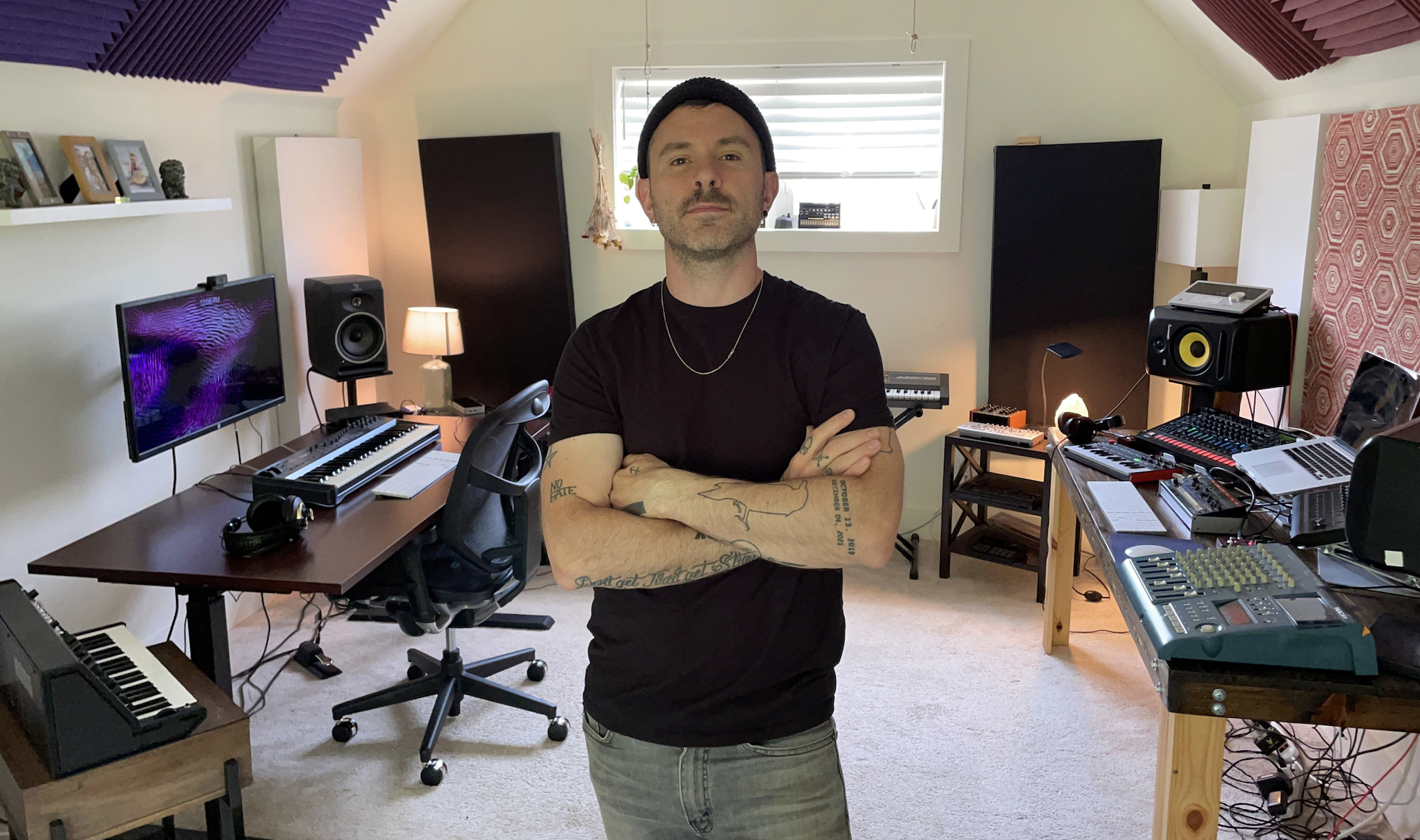
Artist Tips: Black Light Smoke
The processes behind the New York artist's raw, swinging house.
Black Light Smoke is the moniker of Jordan Lieb, who now lives close to nature in upstate Rochester, New York. Originally from Chicago, Lieb studied recording at Hampshire College in Amherst, Massachusetts, before moving to New York in 2001 to pursue a career in music. He filled his early time there by composing for the soap opera One Life To Live, for which he received two Daytime Emmy nominations and a Daytime Emmy Award, and writing music for television commercials—before a discovery of the city’s underground scene inspired him to begin making electronic music. He crossed paths with Francis Harris who invited him to release on his Scissor and Thread label and a series of solo EPs of raw, atmospheric house followed including Lovework and Switchback. The bulk of his work since then has landed on the Brooklyn label, which should be no surprise because much of it’s rich with organic textures, vocals, and jazz references, and over the summer he returned to the label with Ghosts, his latest album, and in this edition of Artist Tips Lieb talks about the key processes and techniques behind it. (For more information on Lieb, check out his XLR8R podcast here.)
Clean Workspace, Clear Head
I used to be ok with a chaotic workspace. My creativity had an urgent, frantic energy to it, and my studio reflected that. But over the years I’ve become more and more particular about the state of my studio. If I have to untangle cables or search endlessly for a power cable I get frustrated and lose focus. I need a clean, uncluttered space in order to think clearly. This allows me the mental space to have a good creative workflow. It also reflects my love for my work and respect for myself.
This may sound nerdy or OCD, but these tasks are so useful. Empty the trash bin, vacuum the floor, and put away as much clutter as possible. Take the time to wrap the cables and store them so they are easy to access in the future. Invest in rubber bands or cable ties so they actually stay wrapped. Get some decent shelving to store unused gear: it feels good to see them all safely displayed. Dust and wipe down desks and surfaces, and actually pick up that keyboard and clean under it. Lastly, get some plants and try to keep them alive. They will add life and a spiritual dimension to your room.
Cleaning also helps me when I’m stuck musically. There’s a sense of despair when you’ve worked on something for hours or days and it seems to be coming to nothing. Usually you are just too close and need a break. Cleaning your studio can sometimes offer that shift in energy that is so needed after sitting and overthinking for too long.
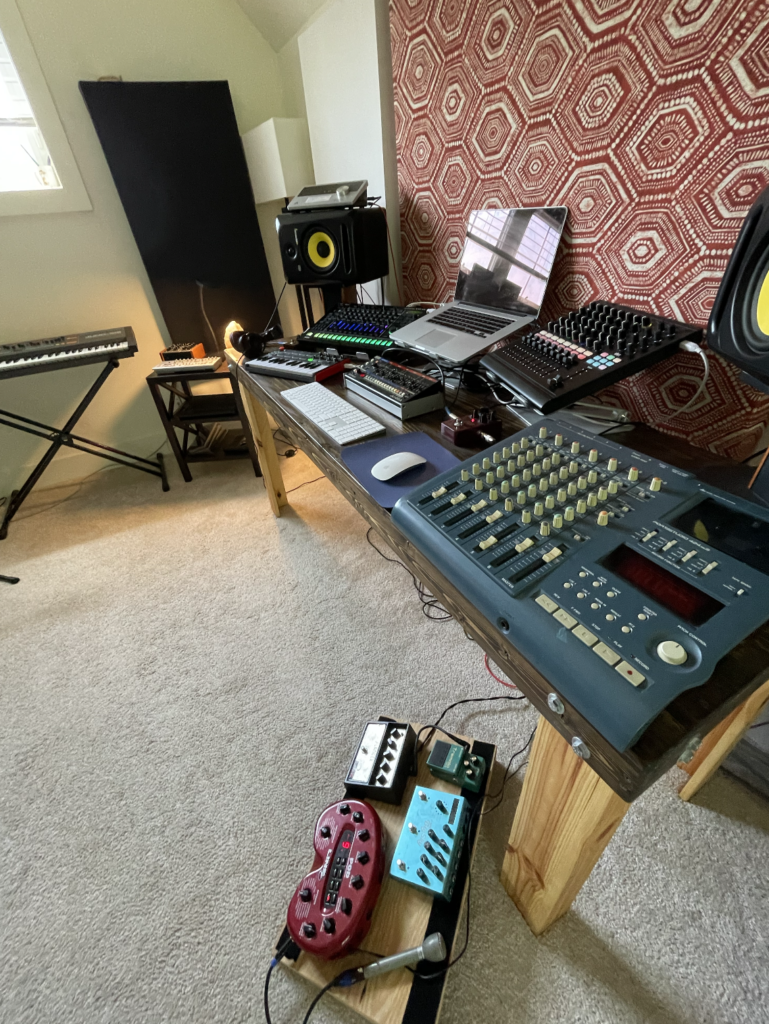
Copy, Copy, Copy
Everything I write references some other music I admire. I copy. I imitate. I steal. Not in the sense of plagiarizing, but I take someone else’s idea and I try it out for myself. I try to figure out how they achieved a certain sound or vibe. Generally I fail, in the sense that I don’t achieve it exactly. I may not be able to capture what I’m mimicking. But in the process I end up in new territory; imitation forces me to try new things and stretch my own skill sets. Obviously it takes discretion to know when you’ve gotten too close to plagiarism, and you have to be honest with yourself about that.
The only advice I give new producers is this: pick a track you like and try to recreate it, either in whole, parts of it, or just the feel of it. You will learn so much. You will see your shortcomings but you will almost certainly discover new gifts.
Let me put this in context, though. What I am talking about is sitting down to actually craft something; trying to mimic a certain guitar sound, a kick drum, a bassline. Learning to create something you’ve heard is the right kind of stealing. Sampling and sample packs are fine tools, but what I’m talking about is different: it’s about making something new for yourself.
For example, finding the right kick drum for a dance track is essential. It will determine the very character of the track. So if you are aiming for a certain vibe pick a track that you feel epitomises that vibe and try to copy the exact kick sound. Is it thumping or kind of thin? Does it have a clicking sound in the higher frequencies or is it soft and muted? [Does it play strict 4 on the floor or are the other accent kicks?] Does it play a simple 1-2-3-4 house pattern, or is it a more complex rhythm? If so, are they straight or shuffled?
Something else I also listen out carefully for is percussion. Sometimes I hear so much more movement and momentum than in my track. Why is that? What’s making it feel so energetic? Are there shakers or tambourine loops? Is there abstract electronic percussion? Is there a kick rumble that is giving it more power than mine? The point is that by copying what I hear in another track I have to think outside of my own comfort zone and go beyond my usual tools.
I’ll give you some examples from my catalog.
The bassline at the beginning of “Fascination Street” by The Cure has an amazingly metallic sound. I’ve tried so many times to achieve it with different guitar picks, pedals, and EQ settings. I’ve never gotten it just right. I think it really comes down to the kind of bass and the kind of strings. But in the process of mimicking I’ve come up with some other cool bass sounds that have ended up on my records. You can hear a similar metallic bass tone in my tracks “North Korea” and “Holy Hammer.”
“Everybody’s Night” by Deux: there are so many aspects of this track I have mimicked. The Roland TR-707 drums, including the 16th note hi hat pattern; the simple synth pad against the synth bassline; the male voice singing the verse and the female voice singing the chorus. These themes went into the creation of “Firefly,” “Morning Comes,” and on my latest record “Hearts Not Broken.” It is a style that I feel is my own, but is also an homage to a band that inspires me.
More recently, on my track “At Home In Strange Places” you can hear my direct imitation of “Lost” by Actress. Specifically the sound of the bassline, which has a bit of a crusher distortion sound, and the chopped female vocal sample. This track has always haunted me.
One more thing that springs to mind: there’s a certain reverse reverb effect that I first heard on a Pink Floyd record. It’s hard to explain. It’s like the audio fades up into itself and then stops abruptly. Trying to copy it was really challenging. It took me some thinking and experimenting with tape to figure it out (this was before Pro Tools). You have to flip the tape and bounce your backwards signal, plus reverb, to a new track. When you flip the tape forward again you have a reverse reverb tail that precedes the dry signal. It’s easy to recreate digitally now. But it felt really good to learn and recreate something totally new.
Yes, so most of the work I’m proud of came from admiration of someone else’s work.
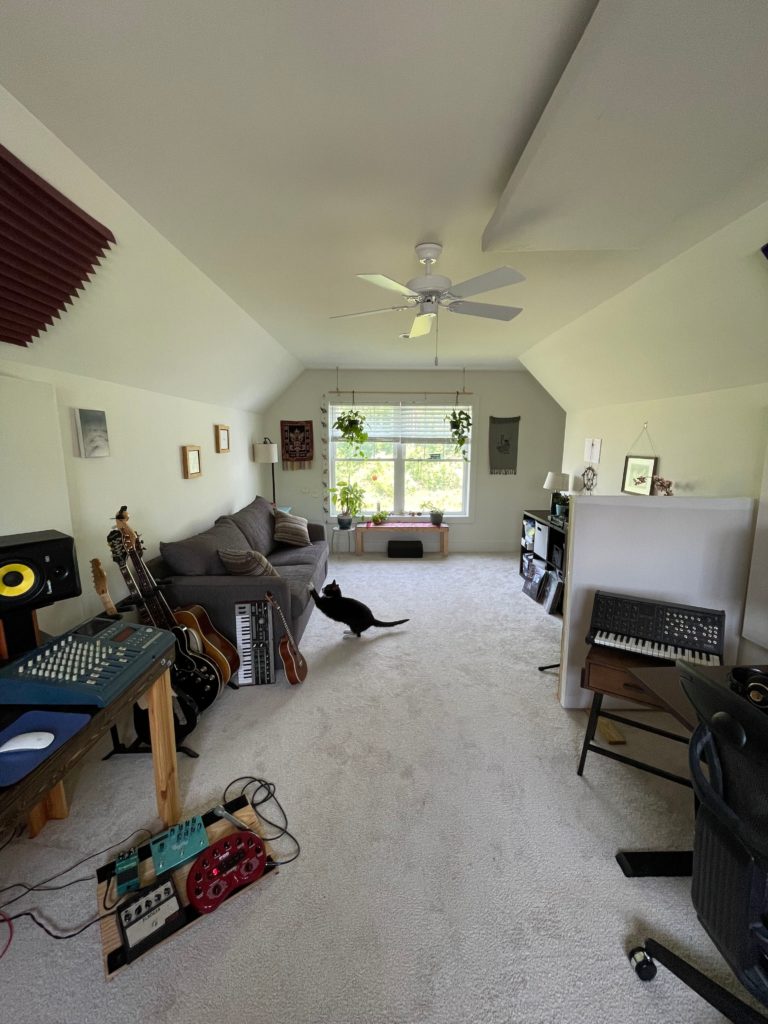
Make Things Sound Just Wrong
When I’m writing I put a lot of thought into making things sound just a little bit wrong. A little bit off, just in the right way. I really don’t care for music that is too slick or clean. Adding lo-fi elements, making a synth wobble ever so slightly, and degrading things just right gives the music a sense of human touch and thought. When done in the right balance I think it invokes certain emotions, and transports the listener to a more abstract, dreamlike place.
My favorite trick is the wobbly synth. It sounds like an old VHS tape loading up. The way to achieve this is to modulate the oscillator pitch with the LFO. You want to set it pretty slow and shallow to get it to sound like an old tape or record. Too much and you get a nauseous, drunk sailor. Prince was actually a master of this sound.
Another trick is to make sure the drums and precision are not all perfectly quantized on the grid. If it’s too robotic it loses something important. But again it’s a fine balance. Maybe the kick drum needs to be perfect but every fourth handclap is rushed a little. Or the claps are on the grid but there is an extra clap that flams against them. Maybe the shakers are a little messy, or maybe they are robotic so other things can be messy. It’s all in small percentages.
I think my love for imperfection has something to do with my age. Music from the ‘80s and ‘90s was not as polished as it is now. Singers were out of tune, arpeggiators were not perfectly synced, mixes were not as loud. I crave those elements in my music. I think young producers today may be missing some of that since modern music is so polished. Exploring outside perfection could bring a new dimension to your own work, or at least some permission to get weird. The best example I can give is “A Number Of Names” by Sharevari; it’s a classic electro disco track from 1981. The claps are rushed, the bass arpeggiator is clearly not synched and is being triggered by hand; it is totally off the beat many times. But there is something so amazing about it. It feels weird and wild. If it were “perfect” it would not be fun.
I also like to do things “just wrong” when mixing down a track. The traditional “right” way to mix, giving each element its own space and frequency, can sometimes feel too clear or too literal. I like things to be overcrowded.
The guitars on My Bloody Valentine records are the perfect example: so crowded they turn into a strange, alien ribbon of sound. That was the inspiration for my song “Celeste” on Black Light Smoke The Early Years. The guitars and vocals are mixed right on top of one another. It has a lot to do with the panning.
To start, you need a lot of layers. For guitars I use no less than eight layers, for vocals at least four or six. Pan all the guitars to the center for extreme effect. Try some slight panning, like half the guitars to 11 o’clock and the other half to 1 o’clock, or maybe 10 and 2. If you like the sound but they are crowding the center field too much, try bussing them together and panning the bus a bit off-center. Some hefty compression on the group helps tighten it even more, and you may need to do a little EQ carving to soften the high-mids. This will make room for your other mono elements like bass and snare.
Looking back, I remember that the first time I mixed a track on an SSL desk I had a lot of preconceptions about how it would turn out. I thought “Great, analog, warm, full… this track is going to mix itself.” The result was anticlimactic. Everything was too wide, too clear, too exposed. It lacked the conflict and tension of my hastily mixed demo: Lovework, my first release as Black Light Smoke.
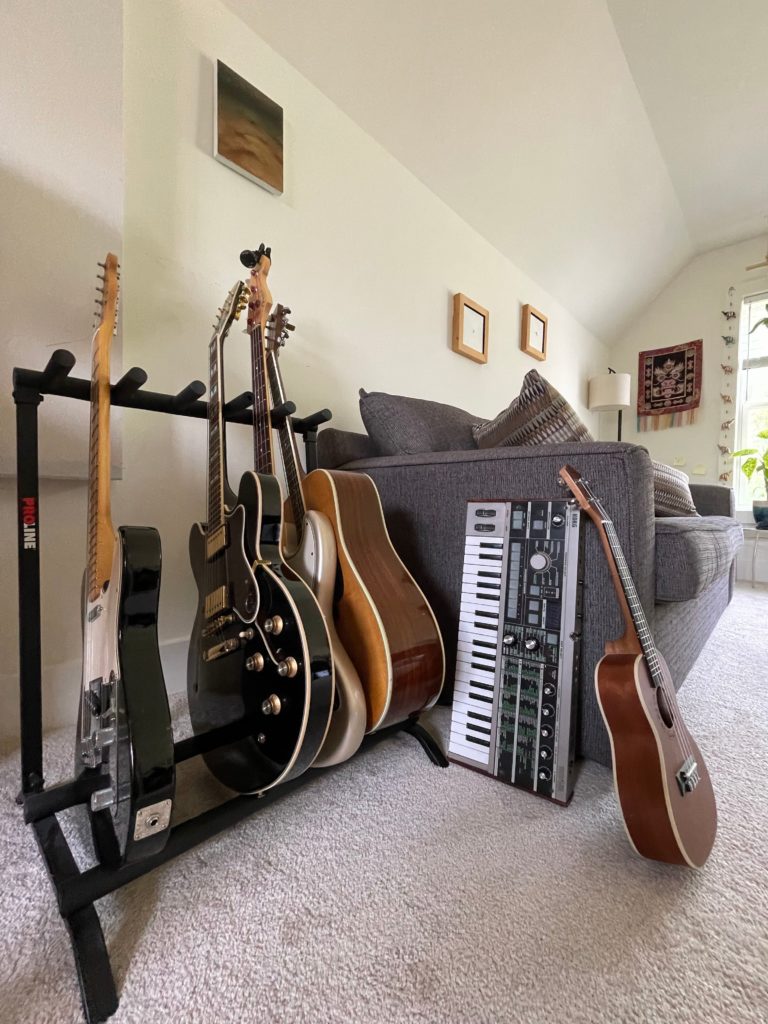
Bring The Noise
I work mostly in the digital realm, so I try to find ways to introduce noise into my tracks. Again, music that is too clean just bores me. Certain noise in the mix adds an abstract dimension; it adds a human factor, and it adds a sense of nostalgia for vintage recording mediums.
The easiest way to achieve this is simply drop some tape hiss into your mix. No need to mix it loud, just enough so you can sense it in the background and quiet sections. Actually, if you mix it too loud it lessens the impact of the overall mix. Not sure why, I think it’s a trick of the brain, something about the signal to noise ratio. To take it further, throw some sidechain compression on the hiss as well, triggered by the kick drum. The breathing effect makes the whole mix feel like it’s ducking, without compressing the actual track.
A more comprehensive way to achieve this is with actual tape. I use a Tascam 4-track cassette recorder. There’s no plugin I’ve found that will recreate this sound. Simply record your signal from the computer on to tape, and then back again. You can do this for a single sample, a loop; I’ve even taped a whole mix across four tracks.
The opening drums in “Lovework” are a good example. The tape makes them so hissy and messed up but with so much character. This is not about achieving the subtle warm quality of mixing a whole track to 1/2” tape. The effect I want is really filtered and degraded. The only drawback is the playback speed of the tape will drift, so if you’re doing a long section you will need to edit it back on the grid.
And, of course, good old guitar pedals introduce noise to the signal. The TC Electronic MojoMojo Overdrive is my poison of choice for drum machines. It gives a good, warm saturation without destroying the low end, plus the EQ is really helpful for dialing in the sound. People make fun of me but I’m still dedicated to the original Line 6 POD. Drums, synths, vocals, guitars: they’ve all been through it. I’m not sure if I love it because it sounds good or bad. If I really want to be naughty I crank its compression. Just filthy.
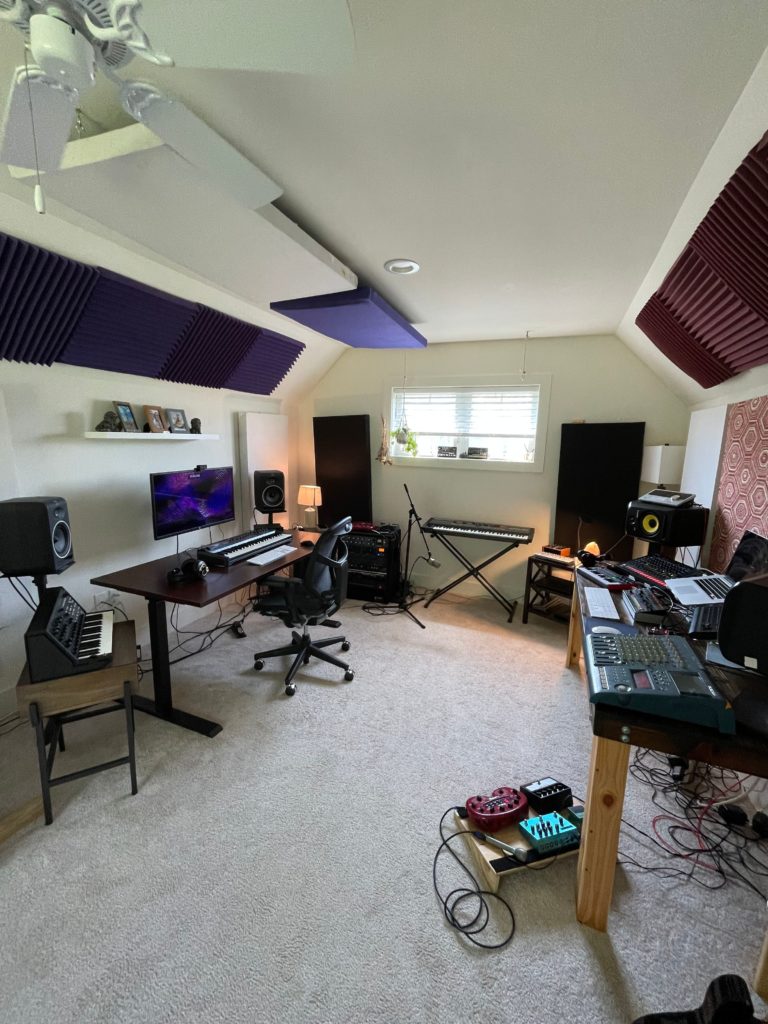
Use Rhythmic Elements to Create Techno Energy
When composing I try to keep the arrangement simple. I believe the rhythm section alone, so drums, percussion, and bass, should feel totally satisfying to listen to. The kick is the most simple, it is the bedrock. The bass plays against the kick in some way, making a duet. The toms often create the next level of complexity, adding more syncopation to the overall rhythm. The hi hats emphasize the offbeats and the shakers glue it all together. If done well, the interplay of these elements creates a complete rhythm that you should want to listen to forever. But there are times I feel something missing from the rhythm and can’t figure out what it is. That last element to glue it together.
An example from my recent work is “727 Anthem (House Is Black)” from my album Ghosts. I wanted a really simple arrangement of drums, percussion, and synth pads. In fact I wanted it to be arrestingly simple. I had been listening to Will Long for inspiration, whose tracks are challengingly simple. But somehow mine felt empty and hollow. An early version of my track had a very languid baseline, so the solution ended up being a punchier, more active baseline, with more syncopation. Not a major difference, but it provided that almost imperceptible glue for the track. I also switched the kick drum from a 707 kick to a 909 kick. This put the track more in a dancy space.
To analyze why this was happening in a lot of my music, I went back to study heavy techno. The drums are often so complete and dense, they carry the track like a workhorse. I wanted some of that feel in my own music. The two things that stood out were the use of really big shaker loops and kick drum rumbles. They both bring such a driving energy to the drums, so I tried them out a bit.
I found that my shakers had been way too flimsy and laid back. If you go this route you’re gonna need layers: try three or four layers of shaker loops, mixing softer sounds with more aggressive ones. I didn’t realize how much energy I was missing in that area of a track. They create a constant, driving 16th note rhythm without interfering in the lower registers. You can really push this.
As for kick rumbles, this sent me on a whole journey of reevaluating my kick sounds, not to mention the idea of layering kicks. A lot more writing can be done on just that. But the concept behind creating rumbles is pretty straightforward: you’re creating a pulsing counter rhythm in the space between the kicks.
Start by either duplicating your kick, or sending it to a bus, post fader. For the cavernous rumble effect, on top of your duplicate kick add reverb, a low pass filter, sidechain compression (triggered by the original kick), plus EQ and saturation to taste. You’ll want to make the reverb mono as well. The sound you are after is a muffled, cavernous warehouse-like reflection. It creates a pulsing 1/8th note counter rhythm. The other rumble effect uses a 16th note delay, high pass filter, and the rest is the same. This creates a beating 16th note pattern between the kick drums. You can create a reverb and delay rumble and combine them.
This is all easier said than done, and I’m oversimplifying the process. But my take-away was really important: you are transferring potential energy from the kick to the spaces between, creating a pulse that really pulls the groove together.
There is so much potential energy to be tapped from the kick drum, so much more forward momentum than just the 1-2-3-4 you think of in techno music. Creating a good kick rumble transfers that energy into the vacuum between the kicks. Even if it’s subtle the difference is huge. The rumble adds an urgency, a sense of endless forward momentum. The reverb rumble creates a yawning, reaching sound that pulls the next kick forward. It also has that felt sense of being in a warehouse rave, something so primal for many techno lovers. The delay rumble creates a beating, racing rhythm that supercharges the entire track. So, yes you are making techno and you feel your track is flat, explore making rumbles to add another dimension of energy.
Support Independent Media
Music, in-depth features, artist content (sample packs, project files, mix downloads), news, and art, for only $3.99/month.

